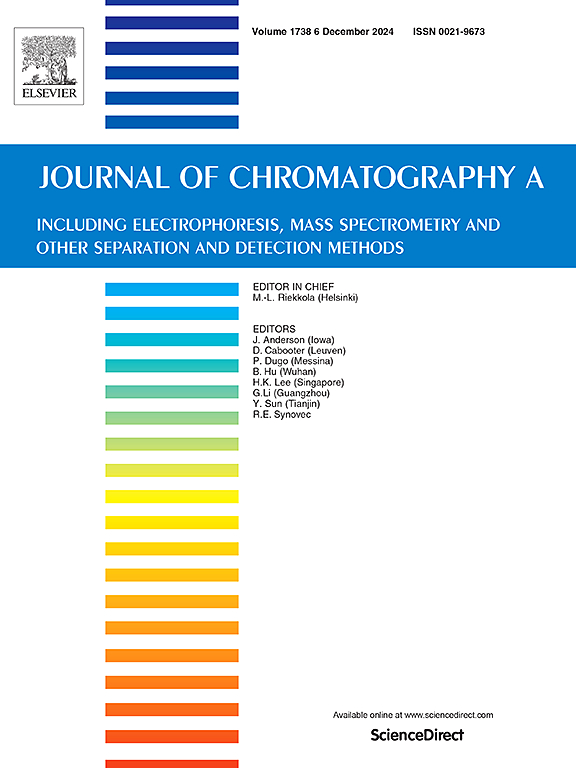Magnetic covalent organic framework as an absorbent coupled with a portable mass spectrometer for rapid detection of malachite green and its metabolite residues
IF 3.8
2区 化学
Q1 BIOCHEMICAL RESEARCH METHODS
引用次数: 0
Abstract
It is important to develop specific adsorbents for malachite green and other fish drug residues. Herein, a simple strategy for synthesizing a novel magnetic covalent organic frameworks (rFe3O4@Py-COF) has been studied, and the materials were used as a magnetic absorbent for solid phase extraction (MSPE) of malachite green (MG) and its metabolite as leucomalachite green (LMG) in fishes. In this study, the mild reduction program of formic acid replacing traditional sodium borohydride as a reducing agent has been adopted to increase the stability of the framework, which can maintain the original high crystallinity and surface area of the reduced COF. The secondary amine bond is expected to be used as the reaction center for further functionalization of COF pore wall. Subsequently, rFe3O4@Py-COF (rmCOF) obtained after reduction was used as MSPE materials to detect MG and LMG by a portable mass spectrometer. After optimizing the conditions, the linearity is good within the range of 1.25∼100 μg/kg (R2≥0.9954), the limits of detection (LODs) are 0.31∼0.44 μg/kg with satisfactory recovery (85.0 %∼106.0 %). These results indicate that the assay is suitable for monitoring MG and LMG in complex aquatic foods, providing protection for food safety.
磁性共价有机框架作为吸收剂与便携式质谱仪联用,用于快速检测孔雀石绿及其代谢物残留。
开发针对孔雀石绿和其他鱼类药物残留的特异性吸附剂非常重要。本文研究了一种合成新型磁性共价有机框架(rFe3O4@Py-COF)的简单策略,并将该材料用作磁性吸附剂,用于固相萃取(MSPE)鱼类中的孔雀石绿(MG)及其代谢产物白孔雀石绿(LMG)。本研究采用甲酸温和还原程序取代传统的硼氢化钠作为还原剂,以提高框架的稳定性,从而保持还原 COF 原有的高结晶度和比表面积。仲胺键有望成为 COF 孔壁进一步官能化的反应中心。随后,还原后得到的 rFe3O4@Py-COF (rmCOF)被用作 MSPE 材料,通过便携式质谱仪检测 MG 和 LMG。优化条件后,在 1.25 ∼100 μg/kg 范围内线性关系良好(R2≥0.9954),检出限(LOD)为 0.31 ∼0.44 μg/kg,回收率为 85.0 % ∼106.0 %。这些结果表明,该检测方法适用于监测复杂水产食品中的 MG 和 LMG,为食品安全提供了保障。
本文章由计算机程序翻译,如有差异,请以英文原文为准。
求助全文
约1分钟内获得全文
求助全文
来源期刊

Journal of Chromatography A
化学-分析化学
CiteScore
7.90
自引率
14.60%
发文量
742
审稿时长
45 days
期刊介绍:
The Journal of Chromatography A provides a forum for the publication of original research and critical reviews on all aspects of fundamental and applied separation science. The scope of the journal includes chromatography and related techniques, electromigration techniques (e.g. electrophoresis, electrochromatography), hyphenated and other multi-dimensional techniques, sample preparation, and detection methods such as mass spectrometry. Contributions consist mainly of research papers dealing with the theory of separation methods, instrumental developments and analytical and preparative applications of general interest.
 求助内容:
求助内容: 应助结果提醒方式:
应助结果提醒方式:


